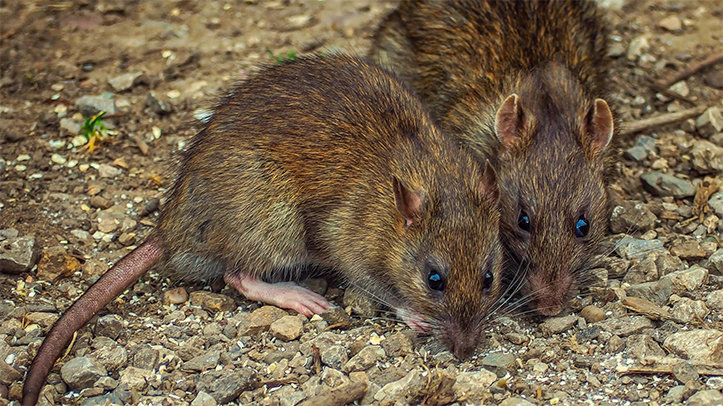Pest controllers across the UK are reporting a surge in rat activity as the mild, wet autumn creates perfect conditions for rodents to thrive.
The latest NPTA BBC Pest Activity Survey showed that rat infestations have risen sharply, with activity up 38% nationally and some regions seeing increases of up to 50%.
From city centres to rural edges, the message from professionals is clear: rats are on the move earlier, breeding longer, and showing no signs of slowing down.
Pest controllers from every part of the UK are seeing the same trend: rats are back in force.
Rats top the list in every UK region, from the North East (50% increase) to the West Midlands (28%).
Mice follow closely behind, with an average increase of 29%, particularly strong in the North West, South East, and London.
Other species such as bed bugs and ladybirds show more localised or seasonal trends, with bed bugs leading in Wales (33%) and ladybirds dominant in the East of England (36%).
One respondent commented: “Rats are the clear driver of activity this autumn. They have barely slowed down since summer, and conditions are ideal for them right now.”
What is behind the increase?
The survey’s open-text responses provide valuable insight into what pest controllers believe is driving the increase in rat activity. Across hundreds of comments, three themes appeared repeatedly: weather, waste, and weakness in building maintenance.
Mild and wet weather
Many pest controllers noted that the usual seasonal drop in rat numbers has been delayed, with mild temperatures keeping populations active outdoors well into October.
Waste and food availability
Poor waste management and overflowing bins were mentioned by more than half of respondents as a key factor.
In urban areas, inconsistent refuse collection and takeaway waste were frequently cited. Some pest controllers also mentioned increased rodent activity around recycling and composting areas.
Building and proofing gaps
Rats are opportunists, and many pest controllers believe they are exploiting weak points in building maintenance.
This issue is not limited to older properties; respondents also mentioned poorly sealed extensions and modern waste storage as emerging problem areas.
Urban v rural picture
The data also shows a clear urban and rural divide. In cities and towns, rats dominate, with increases averaging around 40%.
In rural areas, ladybirds are the leading pest, up nearly 37%, as they seek warmth indoors during cooler months.
This mix of rodent resurgence and seasonal insect migration highlights the varied challenges pest controllers face across the UK.
The bigger picture
Beyond individual species, pest controllers describe a changing pest environment where milder weather, inconsistent waste practices, and building neglect are combining to create a longer and less predictable pest season.
The survey reinforces what many in the industry already know: rodent management is no longer a seasonal task; it is a year-round challenge.
In summary
The BBC Pest Activity Survey revealed:
- Rats up 38% nationally, with increases in every UK region;
- Mice are the second-most reported pest, particularly in urban and suburban areas. Ladybirds and bed bugs highlight distinct seasonal and regional trends; and
- Key drivers include mild weather, poor waste control, and building proofing gaps.
Final word
As one respondent summed it up: “We do not have a rat problem; we have a people problem. Until waste, proofing, and maintenance improve, we will keep seeing the same story every autumn.”


